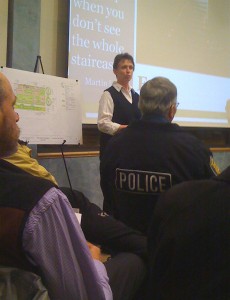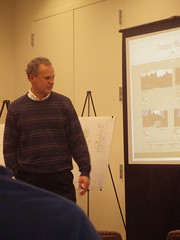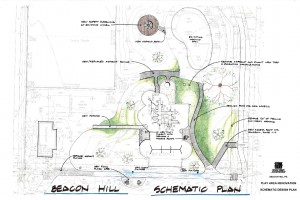On Tuesday, March 9, the Seattle Public Utilities and Neighborhoods Committee (SPUNC)Â agenda included a review of the North Beacon Hill Neighborhood Plan update. Â You can watch the committee meeting on the Seattle Channel website.
Some points of interest in Tuesday’s meeting:
(approx. 20 minute mark) Brief discussion of the goals of the presentation, including mention of the recent appeal of the plan update process, and how the appeal may affect Council actions on the plan (basically, the Department of Planning and Development advising the Council to honor whatever decision the Hearing Examiner makes on the appeal).
(approx. 43 minute mark) Richard Conlin and Sally Clark discuss the idea of easing the transition between the “Urban Village” and the surrounding single family area, perhaps by changing the zoning of the single family area around the station. There’s also an interesting discussion of the definition of “Urban Village” and “Urban Core” — “it’s a thing.”
(approx. 51 minute mark) Lyle Bicknell describes an idea for collecting community input and making the work plan section of the neighborhood plan. Council members discuss the pros and cons of this new format versus the existing matrix.
Overall, committee members showed interest in supporting the community desires for continuing public input in neighborhood planning and implementation of specific goals.
After the committee meeting, Dennis Saxman approached me to discuss the three appeals to the SE neighborhood plan updates. He mentioned he had helped draft the appeals and stated that there is nothing notable in the appeals being identical. Â Saxman also expressed concern about media coverage of the appeals. Â (We agreed that comments on some blogs went too far and became personal attacks.) Â Saxman is familiar with challenging DPD via the Hearing Examiner’s office, most notably in this case on Capitol Hill.
City Councilmember Mike O’Brien is the SPUNC chairperson. This committee is responsible for legislative matters including:
- Water, drainage, wastewater and solid waste services provided by Seattle Public Utilities (SPU), including SPU environmental services and utility rates, regional water resources and endangered species recovery plans
- Neighborhoods, including neighborhood plan updates and implementation
If you are able to attend SPUNC committee meetings and/or City Council meetings in person, it’s a fantastic way to engage with our local elected officials and play an active role in shaping our community. Feel free to contact Esther Handy in Councilmember O’Brien’s office with questions about the neighborhood planning process: esther.handy@seattle.gov, (206) 684-8800.






